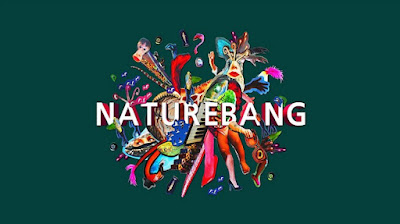I don't have that much to do with people these days. From the intensity of my job, always working with people, to not seeing very many people at all. My job was about steering a path diplomatically and sensitively amongst and between people, occasionally I asserted authority. I don't do that anymore, but I do find it odd when people behave outside of my experience. (Putin, obviously, but I may post about that megalomaniac on The Many Days.) The Groups on Facebook and my "follows" on Twitter, because of where I "live" on the web, generally behave in very expected ways. It's unusual if someone does anything outside of the protocols. But this week someone did, and I found it annoying, indeed, it bothered me considerably. The annoyance passed and I found a way to navigate my way by. And then, the very next day, it happened again, in person. Someone was rude, and I would judge, at the very least prejudicial. I have good expectations of people, I expect the best from them, so it's always a disappointment, and it bothers me, when someone falls below that expectation. Fortunately it's a rare thing.
That doesn't seem to have much to do with my usual subjects on this blog. But it does connect closely to the things that interest me in other spheres, generally found on The Many Days. However, NatureBang bridges the space inbetween. I've really enjoyed these fifteen short programmes and find the jump from biological fact to philosophising about such things as "what makes me, me?" fascinating.
I've spent quite a bit of time on the beach, particularly last weekend and early in the week. The winds, which have been persistent have blown interesting things this way. From a Columbian milk bottle to pelagic crustaceans. Unfortunately I can't count the milk bottle as a species.
The bottle was found on Borwick beach, near Yesnaby. Whilst I was there I also found a Sea Lemon, well, to be fair, Louise found it. It took quite a bit to work out what it was, and it was perhaps not especially fit. However, Doris pseudoargus is a new species.
Whilst at Borwick I also had a look at limpets. I've been trying to find the lichen that lives on their shells, it lives on a number of mollusc shells and on crustaceans as well. I took a few photographs but when I got home and looked them over I wasn't that convinced.
 |
| Patella vulgata, you can see the lichen on the larger shell. |
 |
| These black specks are the perithecia and I thought they were a bit large for Collemopsidium foveolatum, the target species. I speculated C. sublitorale. |
So, not being convinced I went out again, to The Links Beach and at low tide walked out amongst the rocks. This time I took a barnacle sample. Getting the sample home and looking under the microscope I realised I had something else, perhaps a bit more exciting as it really did look like C. sublitorale, and that would be new for the county.
 |
| Collemopsidium foveolatum (probably s.l. these days but more on that in a mo'). |
 |
| The large black perithecia of Collemopsidium sublitorale. |
Now here is the best of people. Email to the county lichen recorder who got straight back to me and asked for a few details. He then sent the photos and my additional comments and measurements to the specialist on this genus at the British Lichen Society who, within an hour or so, replied and I had my new species for the county, and for me, signed and sealed.
However, with regard to C. foveolatum, looks like both my samples, on the limpet and on the barnacles (Semibalanus balanoides by the way) are what is currently passing as that species but there is a paper on the way that may be splitting this species into a number of semi-crypto species. Not published yet though, so ... tick.
Now, whilst on Birsay beach I went back to the big, grey plastic box that we'd found the other day, covered in Lepas anatifera, the Common Goose Barnacle. Initially, I thought I'd got four species on the box, however, a bit of consultation, and some more experienced opinion (thanks MG) established that there were just two species, but one was new, so nice!
 |
 |
| Lepas anatifera. |
 |
| Lepas pectinata with hydroid passengers. |
 |
| Lepas pectinata. |
Friday, I did a short talk, 20 mins, online, about Chrysolina latecincta intermedia. It was for the Field Club. I think it went ok. The slides are going up on a page of this blog shortly.







2 comments:
Naturebang is very good, isn't it? And your talk was much appreciated, thank you!
Thanks Graeme, enjoyed writing it and presenting it. It has also spawned a piece for The Bulletin. I should get organised and pursue the project a bit further by contacting some of the people who will know more. A main task this year is to explore further the distribution of the beetle, hopefully I might have encouraged some folk to get out there and look.
Post a Comment